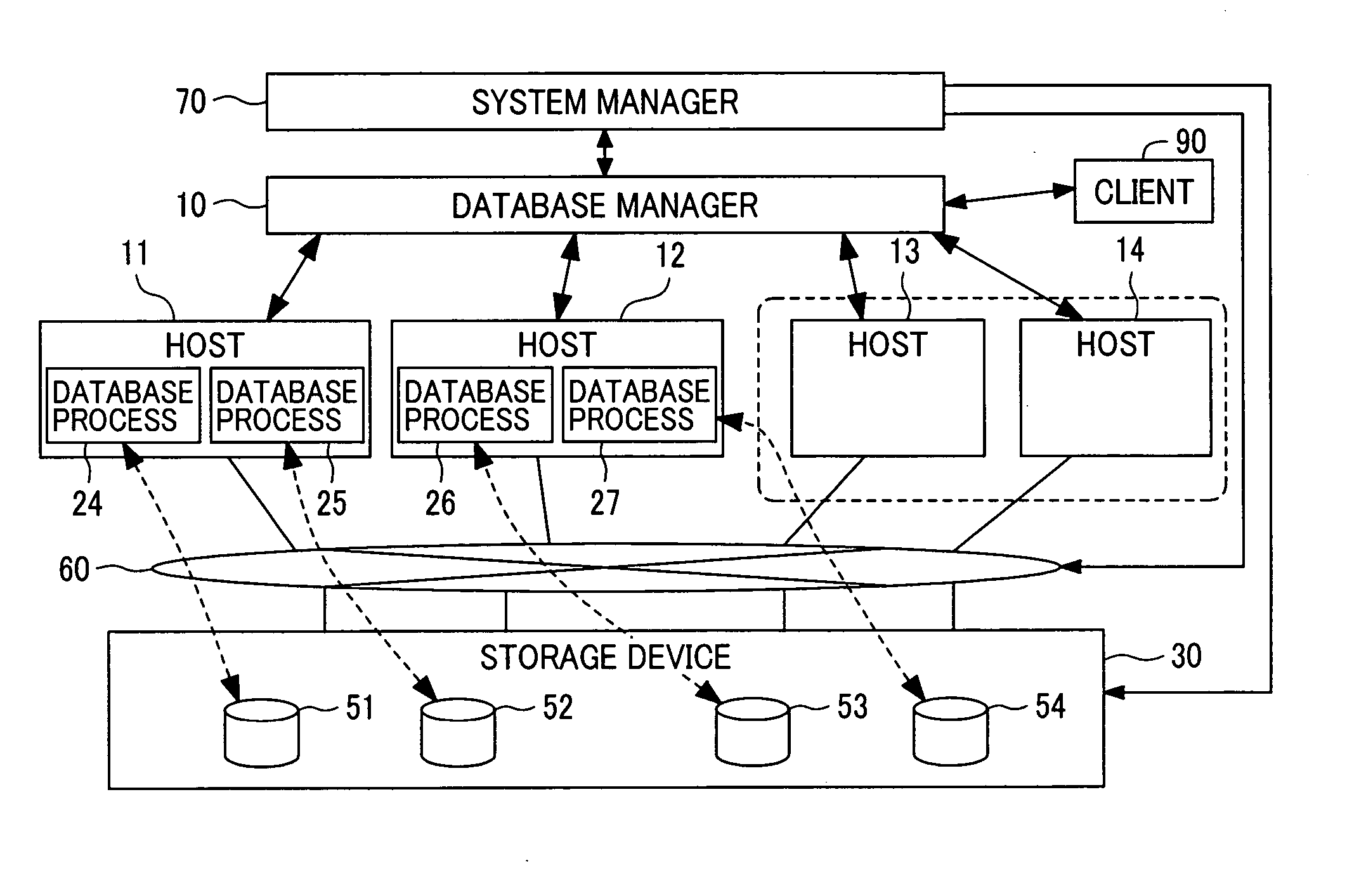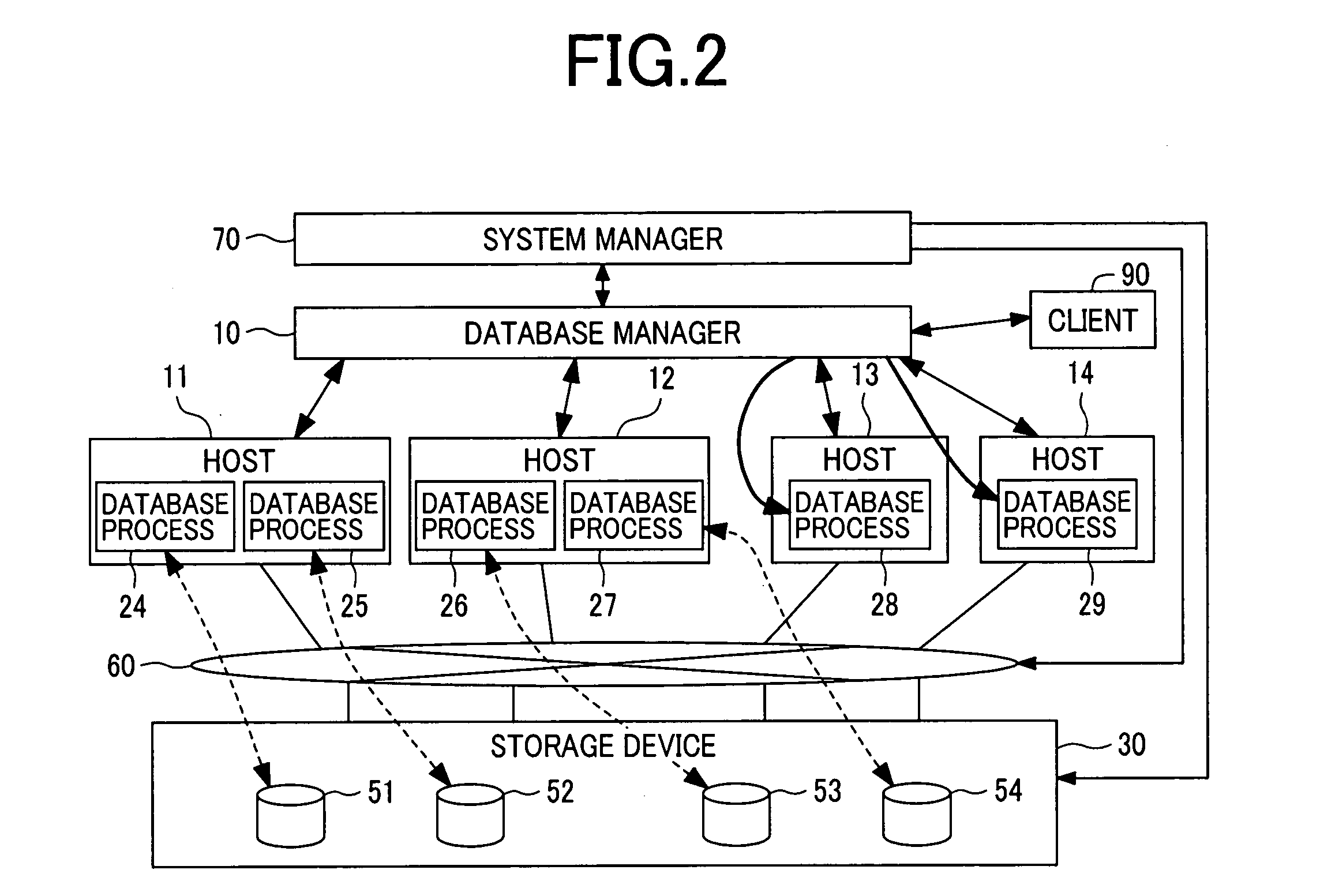Database control method
- Summary
- Abstract
- Description
- Claims
- Application Information
AI Technical Summary
Benefits of technology
Problems solved by technology
Method used
Image
Examples
second embodiment
[0082] In this second embodiment, the system manager 70 transmits parameters required for the optimization to the storage device 30 to start the optimization, so that the increase / reduction of the number physical disks is realized to adjust the storage performance required for the database. Due to storage virtualization and optimization, the increase / reduction of the number of physical disks is transparent. This embodiment realizes a scalable shared-nothing database while keeping the changes to existing shared-nothing databases to a minimum.
[0083] [Determination of Addition / Reduction]
[0084] In the third embodiment, a method for determining, e.g., the timing of the increase / reduction of the number of hosts or disks and the amount of resources to be increased / reduced is explained. According to this third embodiment, the number of hosts 11 to 14 and the disks 51 to 56 of the first or second embodiment can be increased or reduced.
third embodiment
[0085] The administrator determines when and how much resources of the database are changed. This determination is specified in the system manager 70. This is the simplest determination method in this After that, the system manager 70 controls, e.g., the database manager 10 to add / reduce the hosts 11 to 14 or the disks 51 to 56.
[0086] Another method is such that the administrator of the system specifies the performance (throughput and response time) and capacity of the database required to the system manager 70. In this case, the system manager 70 measures the actual performance and capacity, and controls, e.g., the database manager 10 to obtain the specified performance and capacity by re-configuring the database.
[0087] A further method is such that the system manager 70 monitors the hosts 11 to 14 and the storage device 30 to check which between the hosts or disks is a bottleneck (or has spare performance). Then, it adds the resource that is a bottleneck (or reduces the amount o...
first embodiment
[0104] In the first embodiment, the number of the database processes 24 to 29 on the hosts 11 to 14 made uniform by starting and terminating the database processes 24 to 29. However, the present invention is not limited to this embodiment. For example, the required number of the database processes 24 to 29 can be previously activated in the hosts 11 to 14, e. g., when the database is started. These processes are not terminated in case of increase of reduction of the number of hosts 11 to 14. In this case, as “the required number of the database processes 24 to 29,” a different number of database processes 24 to 29 may be started in each in each of the hosts 11 to 14. In this case, for example, two database processes 24 to 27 are activated in each of the hosts 11, 12, and one database processe 28, 29 is activated in each of the host 13, 14.
[0105] [Alternative 5]
[0106] In the second embodiment, the virtualization engine 31 is in the storage device 30. However, the present invention is...
PUM
 Login to View More
Login to View More Abstract
Description
Claims
Application Information
 Login to View More
Login to View More - R&D
- Intellectual Property
- Life Sciences
- Materials
- Tech Scout
- Unparalleled Data Quality
- Higher Quality Content
- 60% Fewer Hallucinations
Browse by: Latest US Patents, China's latest patents, Technical Efficacy Thesaurus, Application Domain, Technology Topic, Popular Technical Reports.
© 2025 PatSnap. All rights reserved.Legal|Privacy policy|Modern Slavery Act Transparency Statement|Sitemap|About US| Contact US: help@patsnap.com



